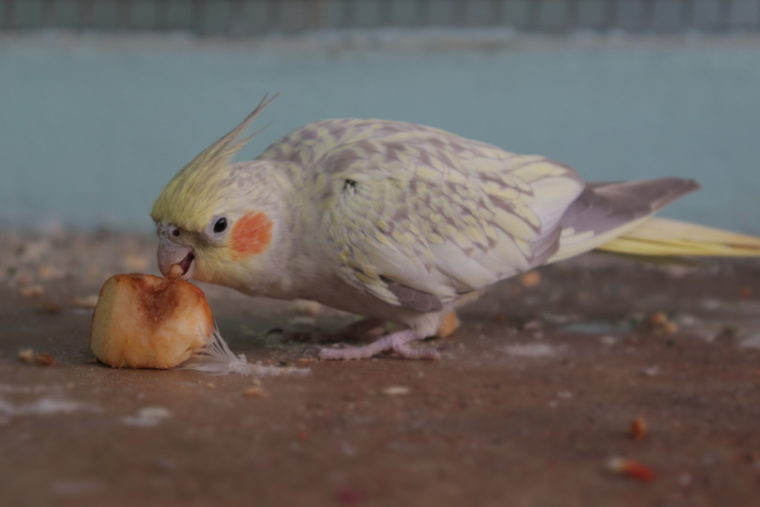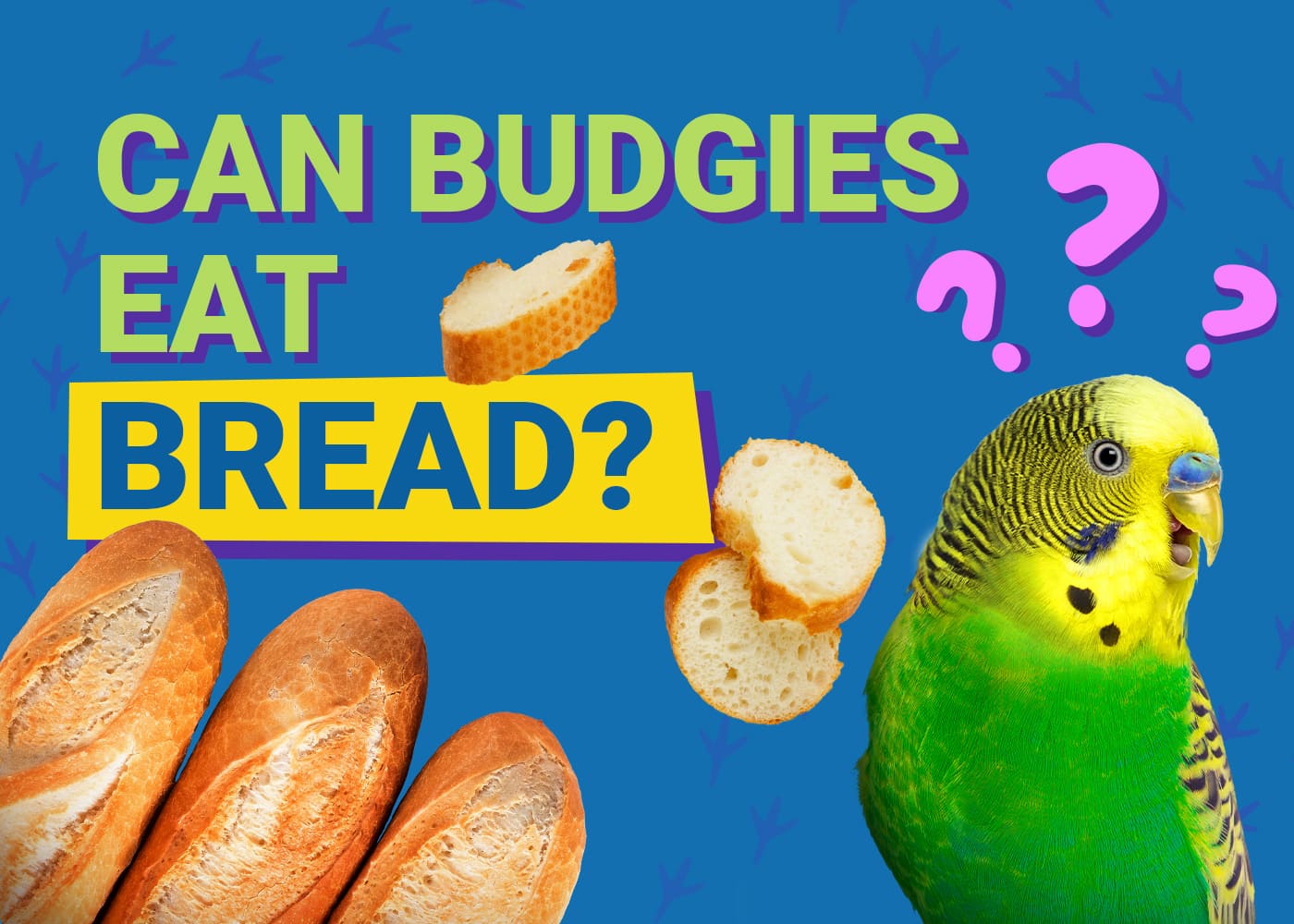
Cockatiels are one of the most popular birds kept as pets because of their big personalities and beautiful appearance. The cinnamon pearl cockatiel is a unique variation of this bird, thanks to its attractive feather pattern that was originally achieved entirely by accident but that was continued through selective breeding practices. Keep reading for more information about the cinnamon pearl cockatiel!
Species Overview

| Common Names | Cinnamon Pearl Cockatiel, Isabelle Cockatiel, Cinnamon Tiel, Cockatiel, Weiro, Quarrion |
| Scientific Name | Nymphicus hollandicus |
| Adult Height | 10–12 inches |
| Adult Weight | 3–4 ounces |
| Life Expectancy | 16–35 years |
Origin & History
Cockatiels are a bird species that originated in Australia, but they have been popular birds in the pet trade for over 100 years. In the wild, cockatiels may live in flocks of dozens or hundreds of birds, making them highly social birds when kept as pets as well.
The export of cockatiels is no longer legal, thanks to a law that was passed in 1939, making the export of all native Australian birds illegal. This means that all cockatiels within the pet trade today are captive-bred birds.
The cinnamon pearl appearance is caused by a recessive gene. This gene originated with gray cockatiels, but once breeders realized the unique appearance the gene created, they began carefully selecting and breeding for the appearance that it creates. Since cinnamon pearl cockatiels are a product of selective breeding, this coloration doesn’t exist in the wild.
Temperament
Like other cockatiel varieties, cinnamon pearl cockatiels are social birds that can bond with humans and birds alike. They require daily interaction with their humans, though. Otherwise, your cockatiel may feel bored or sad, and in some cases, they may begin exhibiting aggression and other undesirable behaviors.
These birds are not suitable for just any home environment, and if you don’t think you can commit the daily time these birds require, it is best to avoid getting them. They are prone to loneliness without proper interaction and care. Over time, excessive loneliness can lead to stress, which can negatively impact your bird’s health.
They tend to be lower activity birds than some other parrot species are, which may make them suitable for you if you’re interested in a companion bird that requires your attention, but that is relatively laid back in its temperament.

Cinnamon Pearl Cockatiel Colors and Markings
When cinnamon pearl cockatiels are hatchlings, they are typically a light yellow color. Like other baby birds, they have downy feathers and oversized heads compared to their body size.
As they age, they develop a cinnamon-tinged brown or gray coloration. This is a result of a gene that causes the typical gray coloration of cockatiels to be replaced with the cinnamon-tinged coloration.
They have bright yellow tail feathers, causing their cinnamon-tinged color to be more striking. Adult males have yellow faces and orange cheeks, while females usually have light orange cheeks and white faces.
There are a few variations of the cinnamon pearl cockatiel:
If you’re curious about the many color mutations and types of cockatiels, we can’t recommend the book The Ultimate Guide to Cockatiels enough!
This beautiful book (available on Amazon) features a detailed, illustrated guide to cockatiel color mutations, plus helpful tips on housing, feeding, breeding, and generally taking excellent care of your birds.
Diet and Nutrition
Like all cockatiels, cinnamon pearl cockatiels require a combination of foods to keep them healthy and nourished. The base of their diet should consist of commercial parrot pellet food. Up to 30% of their daily diet can consist of seeds, and their pellets and seeds should also be supplemented with a variety of fresh vegetables and fruits, like apples, bananas, spinach, and carrots. Cuttlebones, which can be purchased in the bird section of most pet shops, should also be provided for calcium supplementation and to keep the bird’s beak healthy. Always provide clean, fresh water to your cockatiel.
Where to Adopt or Buy a Cinnamon Pearl Cockatiel
A cockatiel breeder is your best bet for finding a healthy and well-adjusted cinnamon pearl cockatiel. Aim to find a bird that has been handled regularly. Improperly socialized cockatiels and those that aren’t used to being held and handled by humans can be difficult to manage.
The alternative to purchasing directly from a breeder is to purchase a cinnamon pearl cockatiel from small pet shops. Small, local pet stores are more likely to work closely with small, responsible breeders than big box pet stores are. Small shops are likely to be able to tell you exactly where your bird originated from. Oftentimes, small shops have more educated and passionate employees who have the best interest of the animals at heart.
Conclusion
Cinnamon pearl cockatiels are beautiful birds that have unique feathers among Cockatiels. This genetic mutation doesn’t occur in the wild, making these birds entirely the product of selective breeding practices. Appearance aside, cinnamon pearl cockatiels don’t have different needs from other cockatiel varieties. They have the same temperament, making them highly social birds that do best with a bonded avian partner and routine handling and time from the people they are bonded to.
Cockatiels are overall relatively healthy birds, and the cinnamon pearl cockatiel is no different. There are no known health problems associated with the gene that leads to the cinnamon pearl coloration, so these birds are likely to be healthy and happy. Cockatiels can live upwards of 35 years with excellent care, so it’s important to consider this when deciding on bringing home a cinnamon pearl cockatiel.
- See Also: 9 DIY Cockatiel Toys You Can Make Today
Featured Image Credit: Barbara Rost, Shutterstock








